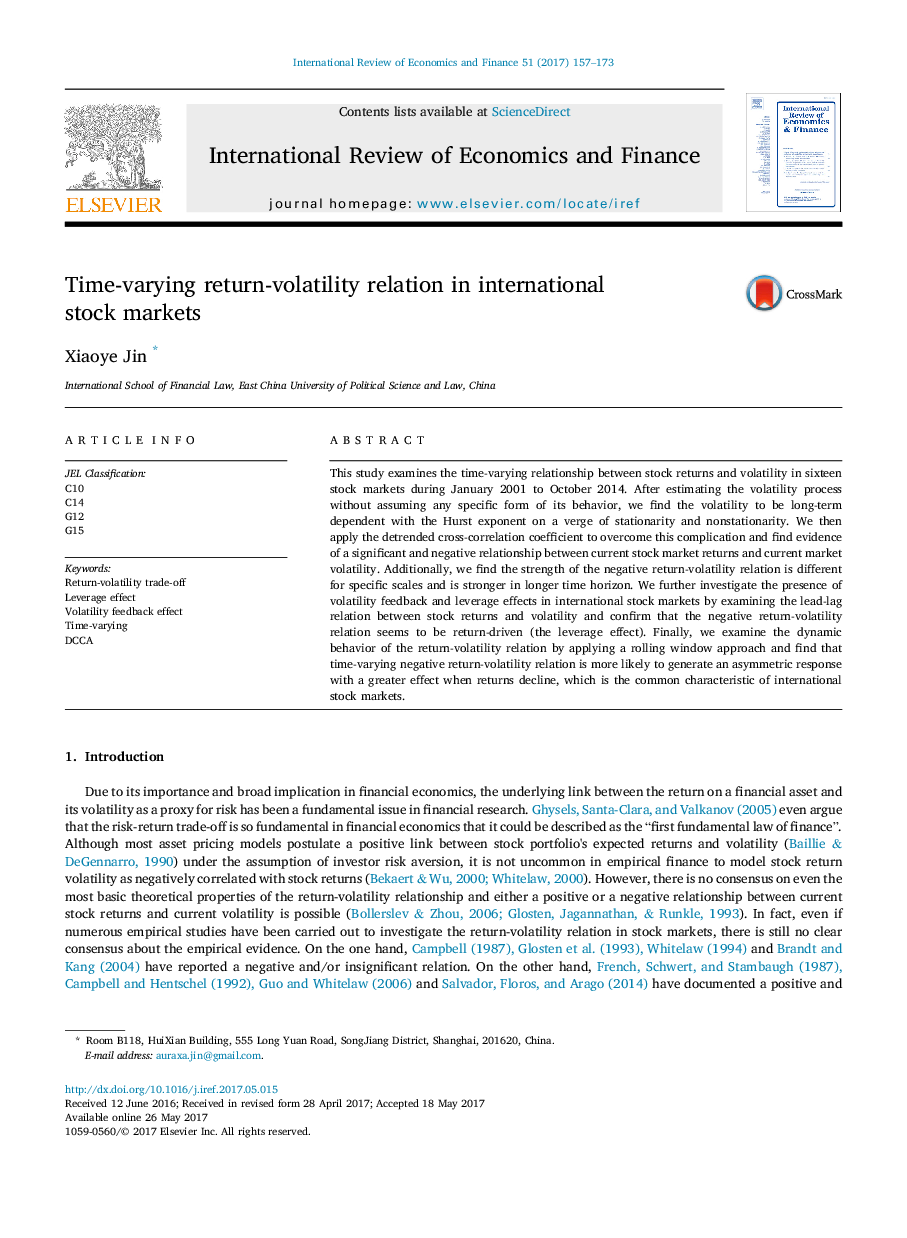ترجمه فارسی عنوان مقاله
رابطه متغیر نوسانات متغیر زمان در بازارهای سهام بین المللی
عنوان انگلیسی
Time-varying return-volatility relation in international stock markets
| کد مقاله | سال انتشار | تعداد صفحات مقاله انگلیسی |
|---|---|---|
| 101036 | 2017 | 17 صفحه PDF |
منبع

Publisher : Elsevier - Science Direct (الزویر - ساینس دایرکت)
Journal : International Review of Economics & Finance, Volume 51, September 2017, Pages 157-173
ترجمه چکیده
در این تحقیق ارتباط متغیر زمانی بین بازده سهام و نوسانات در 16 بازار سهام در طول ژانویه 2001 تا اکتبر 2014 بررسی شده است. پس از برآورد فرآیند نوسانات بدون در نظر گرفتن شکل خاصی از رفتار آن، نوسانات به مدت طولانی وابسته به نماینده حور در آستانه استقالل و عدم استعاره. پس از آن ضریب همبستگی متقارن را برای غلبه بر این عوارض و پیدا کردن شواهدی از یک رابطه معنی دار و منفی بین بازده بازار سهام فعلی و نوسانات بازار فعلی، استفاده می کنیم. علاوه بر این، ما می بینیم که قدرت رابطه منفذ بازگشتی منفی برای مقیاس های خاص متفاوت است و در افق بلند مدت بیشتر است. ما در ادامه بررسی بازخورد بی ثباتی و تاثیرات اهرم در بازارهای سهام بین المللی با بررسی رابطه ی منفعۀ سربار بین بازده سهام و نوسانات، بررسی می کنیم و تأیید می کنیم که رابطه منفعت برگشتی منفی به نظر می رسد که بر مبنای بازگشت (اثر اهرم) باشد. در نهایت، ما رفتار پویا روابط متغیر بازگشت نوسان را با استفاده از یک رویکرد نورد پنجره بررسی می کنیم و می بینیم که رابطه متغیر نوسانگر بازگشت منفی متغیر زمانی بیشتر است که یک پاسخ نامتقارن را با اثر بیشتر ایجاد کند، زمانی که بازده کاهش یابد، که رایج است مشخصه بازارهای سهام بین المللی.

